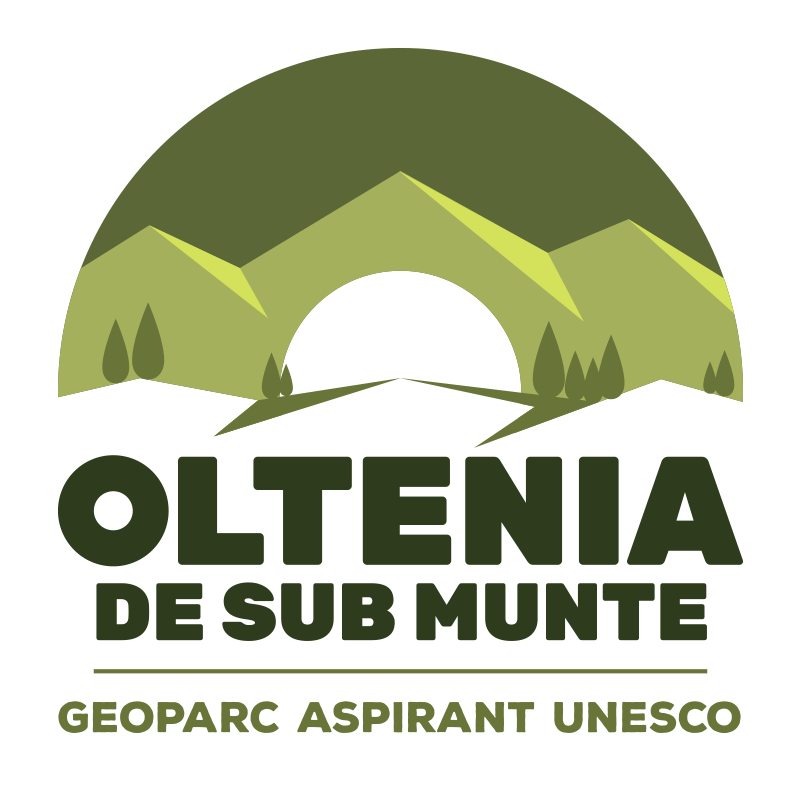Presentation - history, localities
Oltenia de sub Munte is an area distinguished by a great variety and diversity of natural and cultural-historical tourist attractions scattered among the hills and peaks, valleys, depressions and peaks at the southern foot of the Southern Carpathians, from Olt to Danube.
We refer here only to the Valcea part of this region, located on the territory of Vaideeni, Horezu, Costești, Bărbătești, Stoenești and Băile Olănești, situated at the foot of the Căpățânii Mountains overlooking the Buila-Vânturarița National Park.
The area is characterized by a relief predominantly of hills and mountains with forests and alpine meadows crossed from north to south by the rivers that collect the streams of the Căpățânii Mountains towards Olt.
The area's natural attractions are concentrated in particular in the Buila-Vânturarița National Park, which is also a Natura 2000 site and in which there are 12 nature reserves for the protection of gorges, caves, virgin forests, karst landscapes, protected habitats and species.
In the geopark there are 3 other nature reserves: the Museum of the Costești Trovans, the Mosoroasa Marsh and Radita-Mânzu.
In the immediate vicinity of the geopark there are two other nature reserves: the Pyramids of Slătioara and Ocnele Mari. Besides these, in the area the visitor can enjoy nature everywhere, especially in the Cerna Gorge, the crest of the Căpățânii Mountains, the valleys of the rivers Cerna, Marița, Izvorul Rece, Luncavăț, Urșani, Râmești, Bisticioara, Bistrița, Costești, Otăsău, Cheia, Olănești.
Besides the natural wonders, Oltenia de sub Munte is one of the most enriched areas in cultural attractions, especially churches, hermitages and monasteries. The Hurezi Monastery, a UNESCO World Heritage Site, is located here as well.
At the foot of the Buila-Vânturarița Massif are several ancient settlements: Comuna Vaideeni (the villages of Cerna, Cornet, Izvoru Rece, Marița and Vaideeni), Orașul Horezu (and the villages of Ifrimești, Râmești, Romanii de Jos, Romanii de Sus, Tănăsești and Urșani), Comuna Costești (the villages of Costești, Bistrița, Pietreni and Văratici), Comuna Bărbătești (the villages of Bărbătești, Bodești, Negrulești and Bârzești), Comuna Stoenești (the villages of Bârlogu, Budurăști, Deleni, Dobriceni, Gruieni, Gruiu, Mogoșești, Neghinești, Piscu Mare, Popești, Stoenești, Suseni and Zmeurătu), Băile Olănești City (and the villages of Cheia, Tisa, Comanca, Gurguiata).
The presence of man in river valley settlements is very old. The neolithic vestiges discovered in caves and around the first village hearths testify to the settlement of these calamity-free lands since ancient times. In Costești, the Ferigile culture from the Second Iron Age was discovered. Two brothers, Bărbat and his brother Litovoi, were leaders of the first feudal organizations in Wallachia (13th century). Bărbat's descendants are said to have founded Bărbătești.
In the national park or near it, there are the monasteries of Bistrița and Arnota, the Pătrunsa and Pahomie hermitages, the two rock churches of the Peștera Liliecilor, the churches of the former Păpușa and 44 Izvoare.
In the immediate vicinity, in the villages at the foot of the mountain, there are dozens of other historical and artistic monuments, including the Hurezi monastery, listed as a UNESCO World Heritage Site, and the surrounding hermitages, the turrets of Măldărești, the wooden churches of Marița, Grămești and Grușetu, the hermitages and monasteries of Iezer, Bradu, Jgheaburi, Govora, Dintr-un Lemn, the churches of the region's villages, old houses, craftsmen's workshops and many others.
In the mountainous and subcarpathian area of Oltenia, the main occupations have been and still are related to using of available resources.
The shepherding was and still is an important occupation, which is linked to a lot of local customs, traditions and creations, from the proud Oltenian carpets to the tasty cheeses, from the transhumance customs to the specific products of the sheep yards. Every spring the herds move up to the Căpățânilor's ridges, and the activity resumes in reverse every autumn when they come down from the mountains for the winter. Shepherding customs have been preserved in particular in Vaideeni, a village with a traditional lifestyle and customs brought from over the mountains, on the edge of Sibiu.
The specificity of the area, traditions, customs and crafts are closely linked to the main occupations of the locals: shepherding, wood and stone working, fruit growing and beekeeping.
The area is famous for its pottery (Horezu pottery is listed as a UNESCO Intangible Heritage Site), as well as for its Oltenian carpets. The raw silk of Stoenești occupies a special place, as here the only business in the country where this silk is produced in the traditional way - starting with the orchard of the mulberry trees, growing silkworms to produce the thread from which the cloth is woven and from which the traditional iams and marams are made. There are also other wooden handicrafts in the area, as well as woodworkers and carpenters, harbour and pastoral traditions, and traditional local products: fruit, jam, cheese, honey and other products derived from them.
The specific architecture of the area is based on wood and stone working, which are also the most available materials in the area of Oltenia de sub Munte. The houses built here have a porch in front, and under it there is usually a cellar. The foundations are built of stone mortared with mortar, the walls are made of plastered wooden beams, the roofs are covered with shingles. The storerooms and animal shelters (stables, haylofts) are also made of wood.
The area is one where you can actively spend your free time in nature, where you can discover and explore forests, mountain ridges as well as traditional villages and little known monuments.
It is an ideal area for hiking, rock climbing, mountain biking and ski touring.
